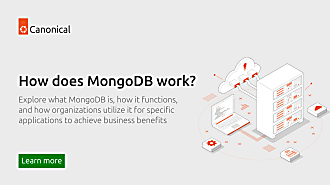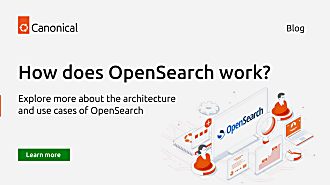Michelle Anne Tabirao
on 10 June 2022

IT leaders, engineers, and developers must consider multiple factors when using a database. There are scores of open source and proprietary databases available, and each offers distinct value to organisations. They can be divided into two primary categories: SQL (relational database) and NoSQL (non-relational database). This article will explore the difference between SQL and NoSQL and which option is best for your use case.
Defining SQL
Many IT decision-makers, developers and analysts are familiar with the Relational Database Management System (RDBMS) and the structured Query Language (SQL). The SQL database language emerged back in 1970. Its primary focus was to reduce system data duplication by creating data structures and schemas.
While SQL remains a standard in organisations worldwide, we see many other database systems emerging. This is mainly due to the rising volume of unstructured data, changing storage requirements, the need for high processing power, and evolving requirements in analytics that database applications have to cater to. NoSQL is one of these newer database systems.
Defining NoSQL
The main difference between NoSQL and SQL is that NoSQL adopts a ‘right tool for the job’ approach, whilst SQL adopts a ‘one tool for all the jobs’. This is the reason why NoSQL is the popular database category alternative to traditional RDBMS.
NoSQL was developed in the late 2000s. NoSQL stands for “not only SQL” rather than “no SQL”. This database category aims to build flexible schemas and specific data models. Typically, these databases are built for the web or for scenarios where traditional relational databases can have limitations. NoSQL databases can be quicker to develop applications with, can offer more flexibility and scale; and they often offer excellent performance due to their specialised nature.
SQL vs NoSQL
To make informed decisions about which database type to use, practitioners should know the differences between SQL and NoSQL. The table below describes their differences in terms of database structure, storage model, scalability, properties, support, and communities.
| Category | SQL | NoSQL |
|---|---|---|
| Database structure | Relational database Has a predefined schema for structured data | Non-relational database Has dynamic schemas for unstructured data |
| Data Storage Model | Table-based with fixed rows and columns | Document: JSON documents Key-value: key-value pairs Wide-column: tables with rows and dynamic columns Graph: nodes and edges Search: search engine daemon |
| Example Database | MySQL, PostgreSQL | Document: MongoDB Key-value: Redis Wide-column: Cassandra Graph: Neo4j Search: OpenSearch |
| Scalability | Most SQL databases can be scaled vertically, by increasing the processing power of existing hardware. | Some NoSQL databases use a master-slave architecture which scales better horizontally, with additional servers or nodes. |
| Support and communities | SQL databases represent massive communities, stable codebases, and proven standards. SQL languages are mostly proprietary or associated with large, single-vendors. | Some NoSQL technologies are being adopted quickly, but communities are smaller and more fractured. Some NoSQL communities benefit from open systems and concerted commitment to onboarding users. There are also multiple proprietary NoSQL services that organisations can use. |
| Properties | RDBMSs must exhibit four “ACID” properties: Atomicity, Consistency, Isolation, Durability. | NoSQL adheres to 2 CAP theorem, and 2 of the 3 properties can be guaranteed: Consistency, Availability and Partition Tolerance. |
When to use SQL and NoSQL in your organisation
SQL can be used for big data, but NoSQL handles much bigger data by nature. SQL is also good to use when data is conceptually modelled as tabular. It’s recommended for systems where consistency is critical. Some of the possible use cases for SQL are managing data for e-commerce applications, inventory management, payroll, customer data, etc.
NoSQL databases are categorised into different structures, and they can be a document database, key-value, wide column, graph and search. Each type has its strong properties that fit specific use cases, such as:
- Document: a general-purpose database for web applications, mobile applications and social networks.
- Key-value: large amounts of data with simple lookup queries. The most common use case is caching. Memcached is one example. It is an in-memory key-value object-store. MediaWiki uses it for caching values. It reduces the need to perform expensive computations and the load on database servers.
- Wide-column: large amounts of data with predictable query patterns. An excellent example is an inventory management system that supports critical use cases and applications that need real-time analytics capabilities.
- Graph: analysing and traversing relationships between corresponding data, which is suitable for use cases like fraud detection & analytics, recommendation engine, and social media and social network graphs.
- Search: this is good for application search, log analytics, data observability, data ingestion, etc.
Conclusion
The criteria above provide a helpful rubric for database administrators, analysts and architects to make informed decisions around SQL and NoSQL. Consider critical data needs and acceptable tradeoffs in properties, data structure performance, and communities when evaluating both options.
Canonical enterprise data solutions
Ubuntu Pro + Support
Get your data solutions secured with Canonical and Ubuntu .The Ubuntu Pro license provides security patching for critical and high-severity Common Vulnerabilities and Exposures (CVEs) with ten years of security maintenance. In addition to this, we offer direct 24/7 access to a world-class, enterprise open source support team through our web portal, knowledge base or by phone.
Consulting Services
Our team of database experts is here to help you get started with your data solution, providing guidance for new projects design and deployment, along with migration strategy and planning for existing databases..
Data Fabric Solutions
Simplify your database operations with Canonical. Offload security and maintenance so you can focus on getting value from your data. Canonical offers enterprise support for data applications such as MongoDB, OpenSearch, Spark and Kafka.
Secure and scale your open-source data applications – Contact Canonical.



